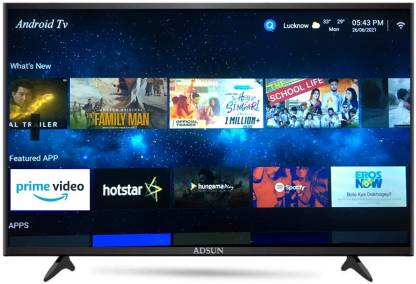India uses NTSC format, which is the standard TV broadcast in most countries.
NTSC (National Television System Committee) is a television broadcasting standard created by the National Television Systems Committee in the United States. It was first developed in 1941 and then revised for color television on December 30, 1953. The NTSC has been updated several times to accommodate improvements to technology and expansion of broadcasting standards.NTSC uses 525 lines per frame with an aspect ratio of 4:3 (H:V), interlaced frames composed of two fields activated half a line each time, running at approximately 59.94(29.97) frames per second. This can be rounded off as 30 frames per second, hence the name.For each frame, a total of 525 scan lines are generated from 15750 active lines every 1/30 second. Each scan line is composed of two interlaced fields with 262.5 horizontal pixels each for a pixel aspect ratio of 4:3 for standard definition video and 16:9 (1.78:1) for high definition video (HDTV). The original NTSC signal contained a two-frame alternating pattern of 525 lines, which was assembled by the signal being repeatedly flipped with the same frequency (10.52 MHz) in each direction.Since standard definition analog television could not reproduce full-motion pictures with a 4:3 aspect ratio, the NTSC signal was converted to a 4:3 interlaced format using an Analog Interchange Format (AIF). This is also known as "4×3" or "4I".
Image source: https://www.smartprix.com/
An alternative method of converting the 525-line digital data to 525 lines of NTSC color balanced analog video used in NTSC TV sets is Reverse Telecine.In Europe and other countries with 240-line TV systems, digital video is normally broadcast as 381, 576 or 704 scan lines. Such television sets are capable of receiving either analog NTSC format or digital DVB format.Because the current standard for high-definition broadcasting in Japan, Korea and China is 1080i60 (1080×1920) (aka "full HD") rather than 720p50 ("SD") the term "NTSC" usually refers to the 4:3 aspect ratio of NTSC signals.For the DVD-Video format, the 480 scan lines are changed to 576, then another scan line is removed, and finally the remaining 480 scan lines are converted to 720 pixels, resulting in a "full" 1080i format. A similar result can be achieved with a set-top box and an S-video cable.The analogue NTSC color camera signals are usually broadcast at either 852 scanning lines (506 in PAL) or 1056 scanning lines (556 in PAL).
Image source: https://www.flipkart.com/
A standard definition YPBPR (color difference or hybrid PQ) signal from a high definition source carries 1280 pixels, but is derived from 480 scan lines. This signal is converted to a format called 1080i60. This format has exactly the same P frame and B frame lines as 1080i50 but with half the number of pixels per line, or 1/60 of the original bandwidth. The number of lines per field also remains unchanged, so there is no temporal resolution loss.A lower resolution version of this processing, known as Telecine processing (or "interlace to progressive scan conversion"), converts fields from an interlaced source to frames for progressive scan output (480p).


Comments
Post a Comment